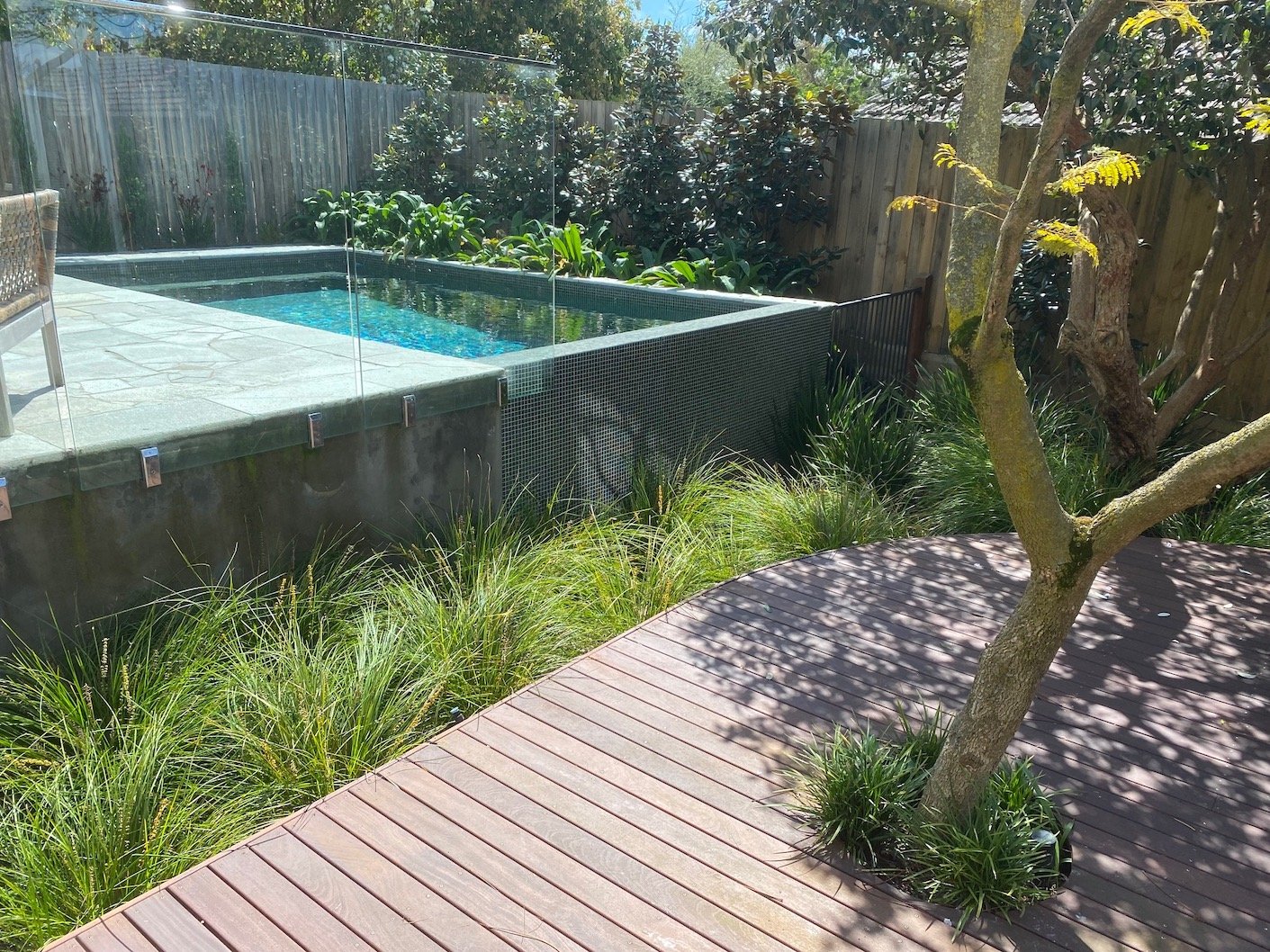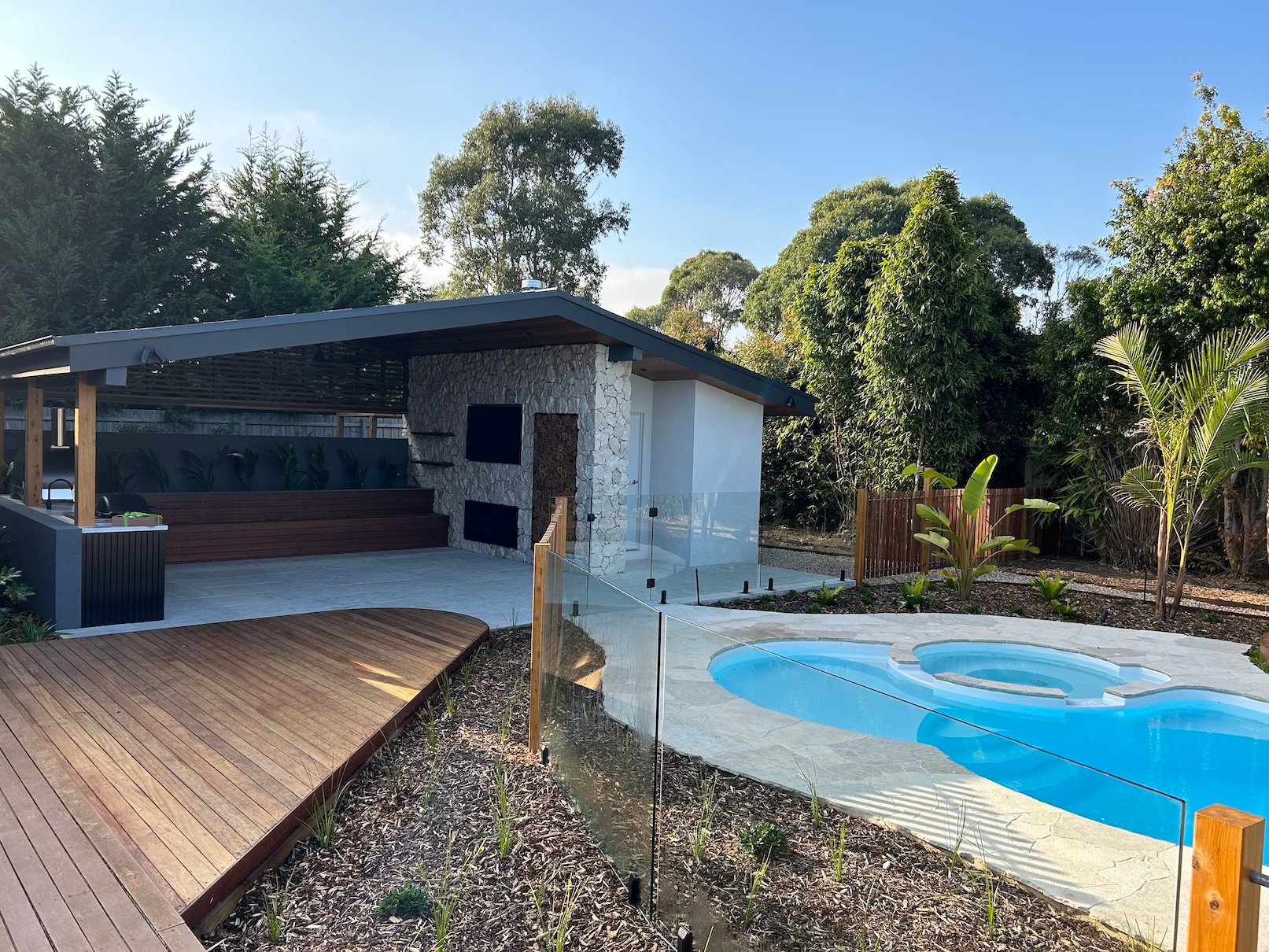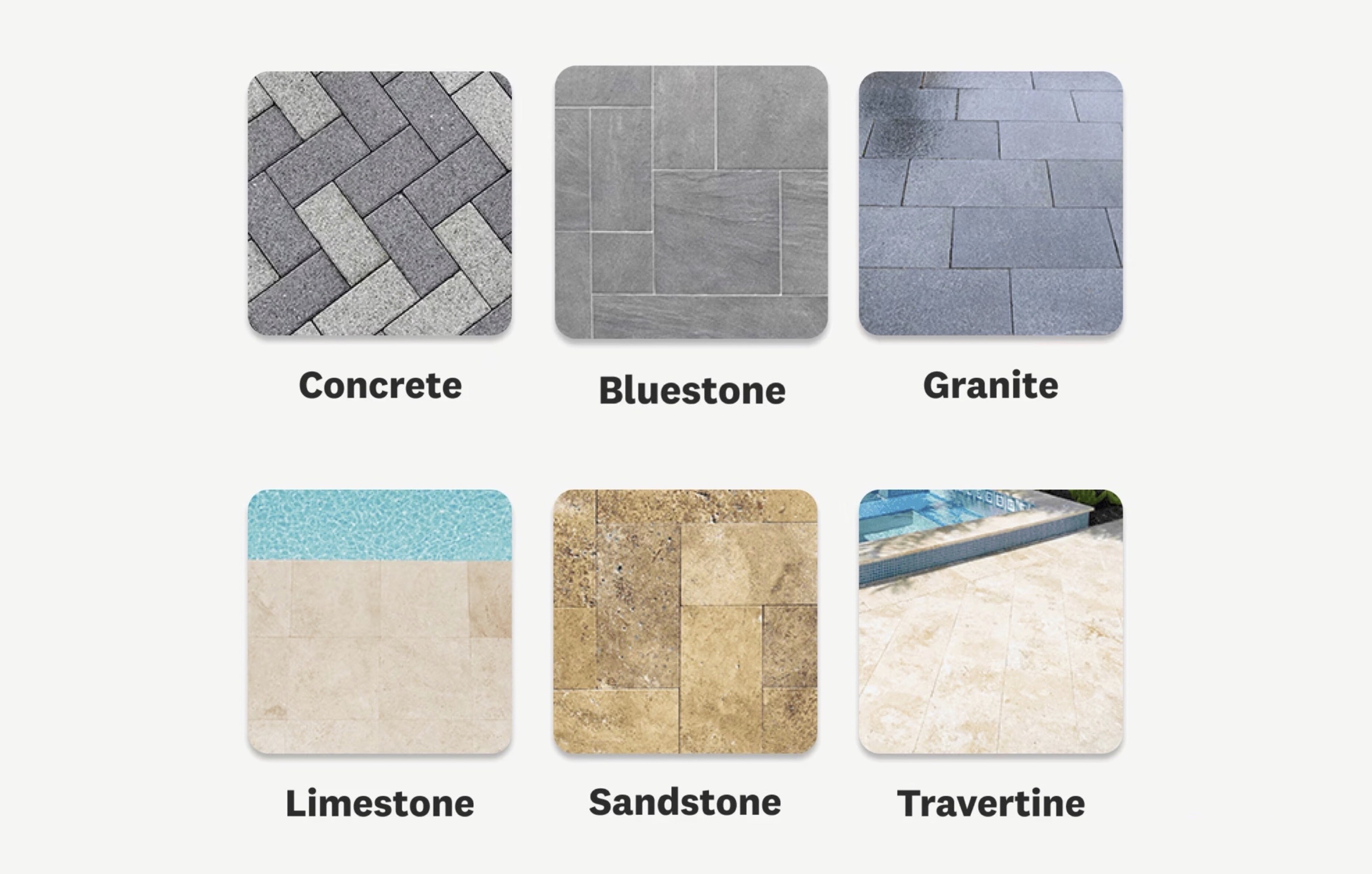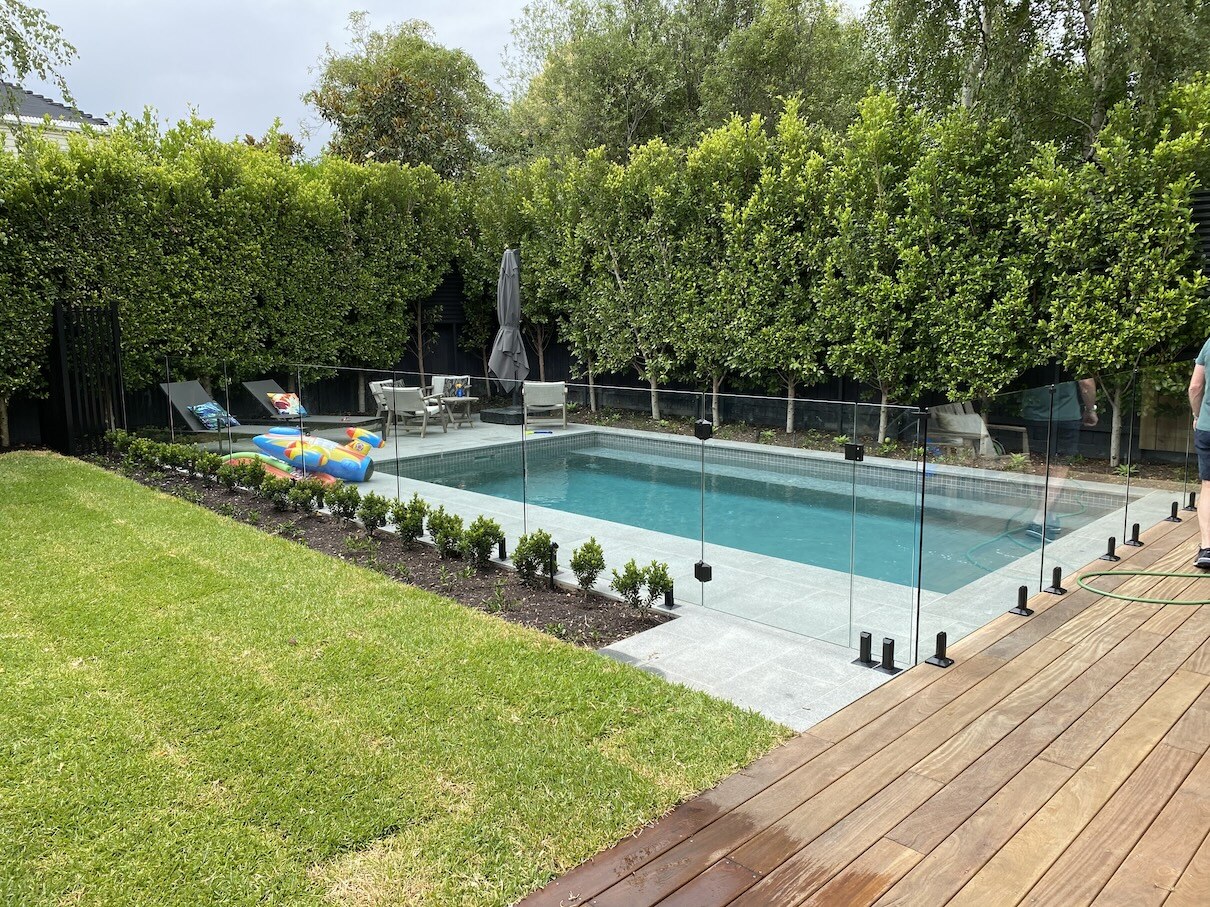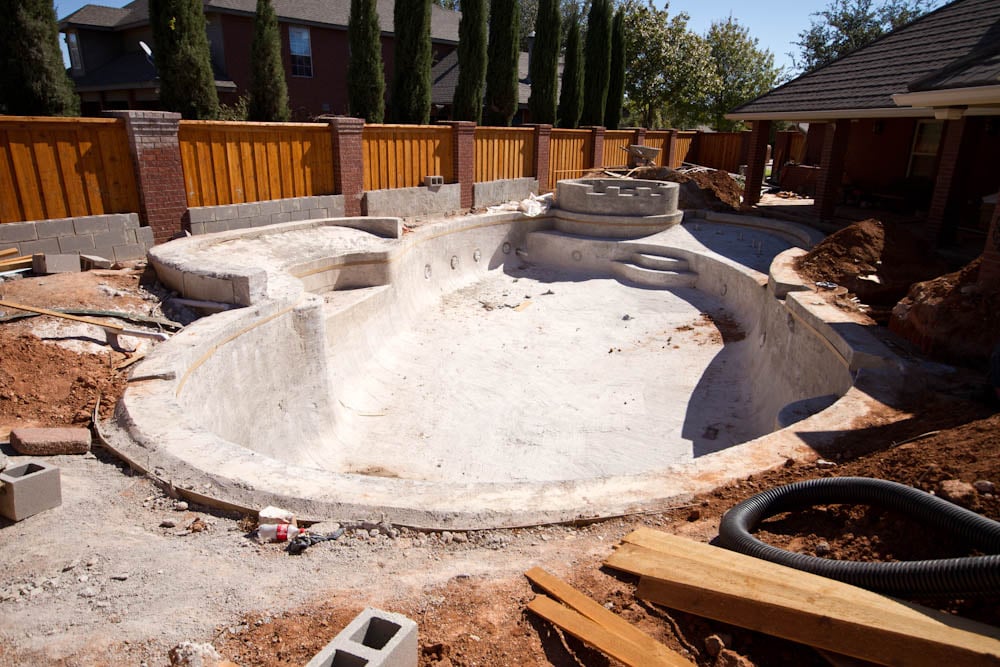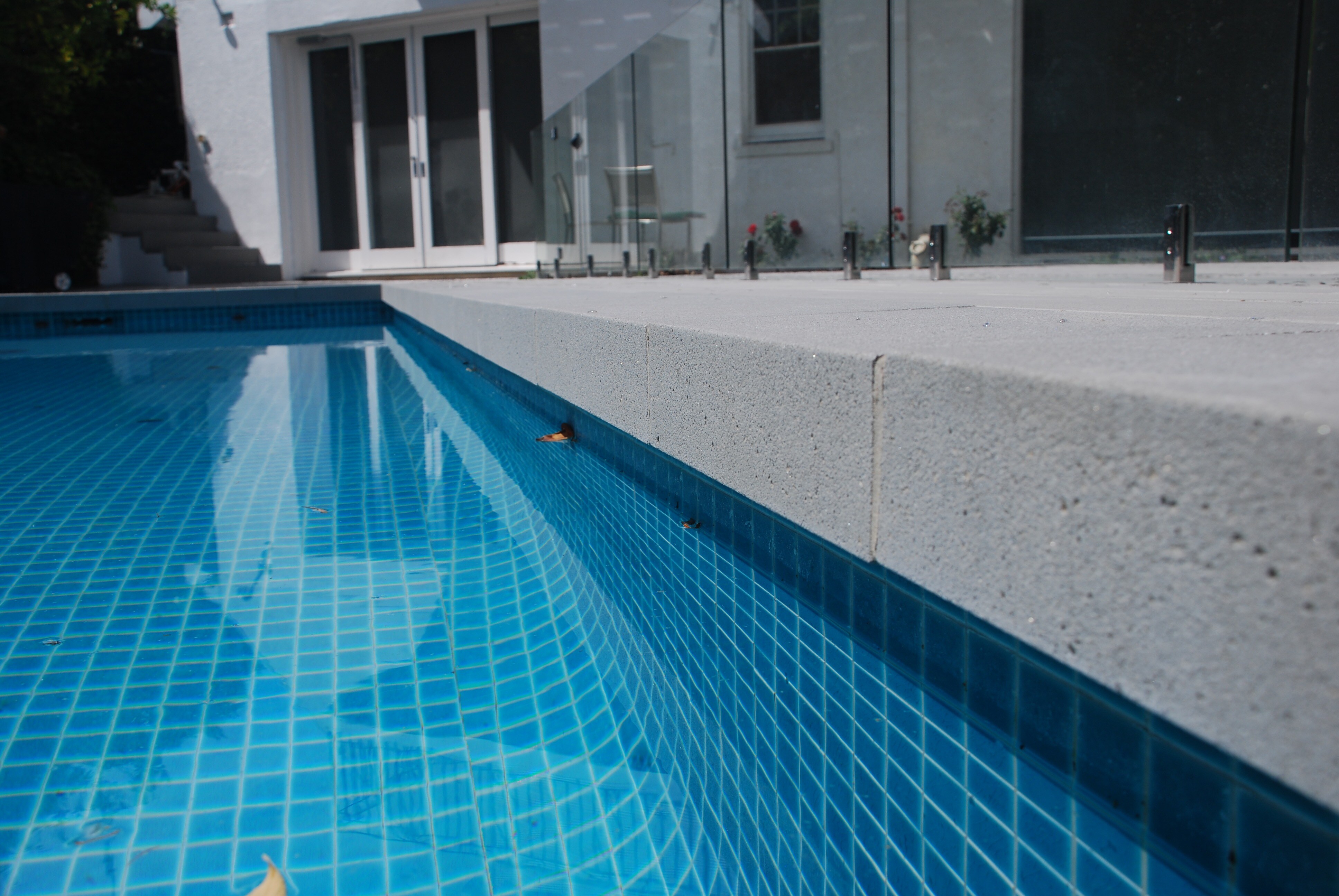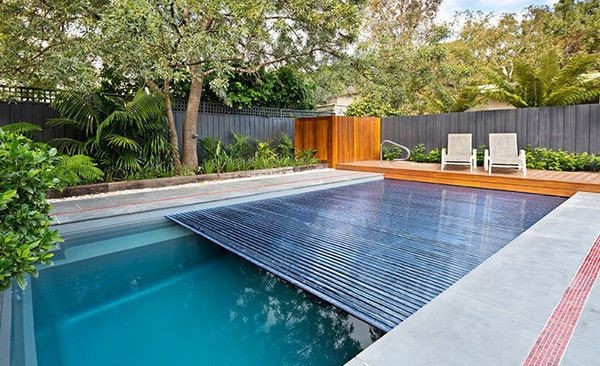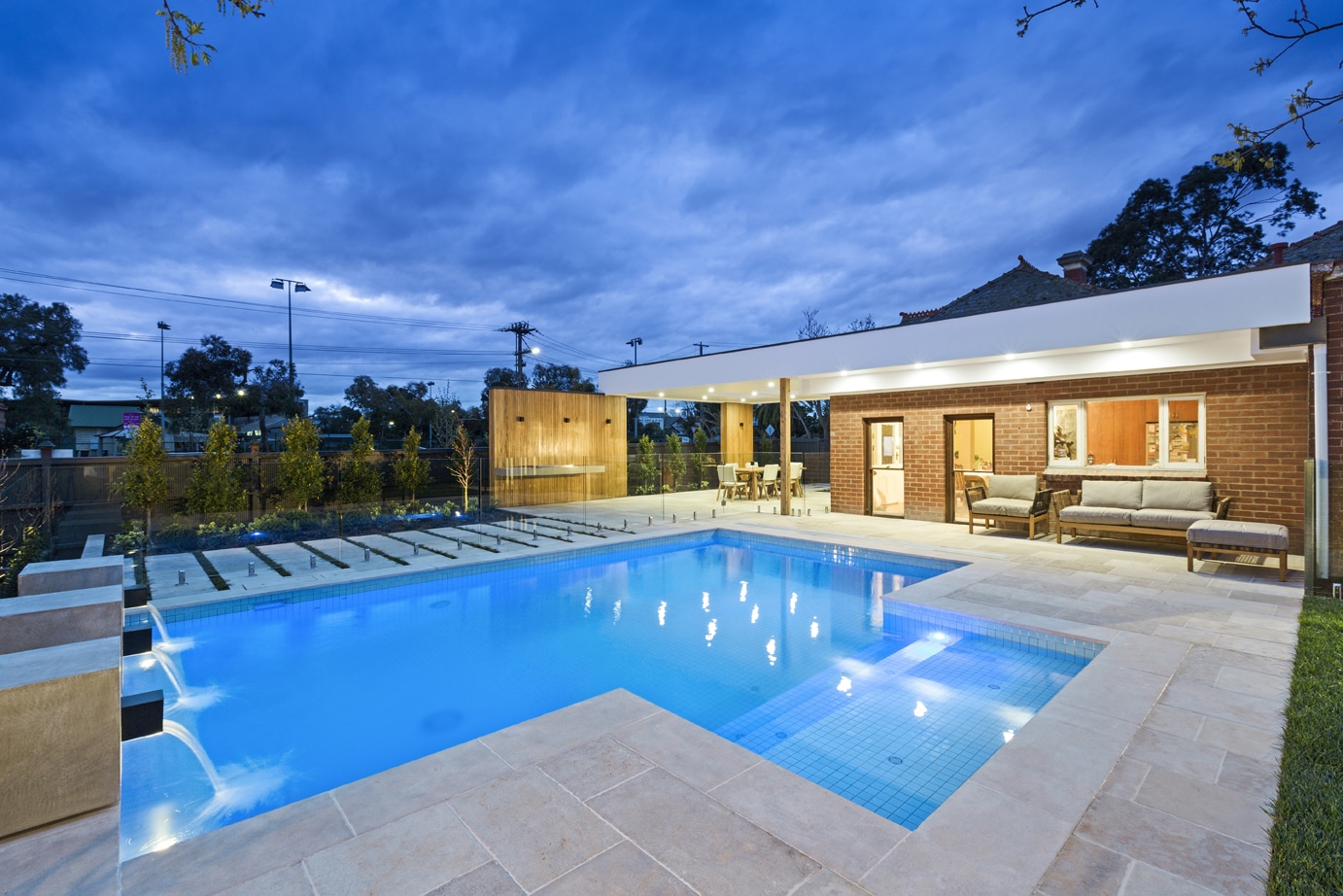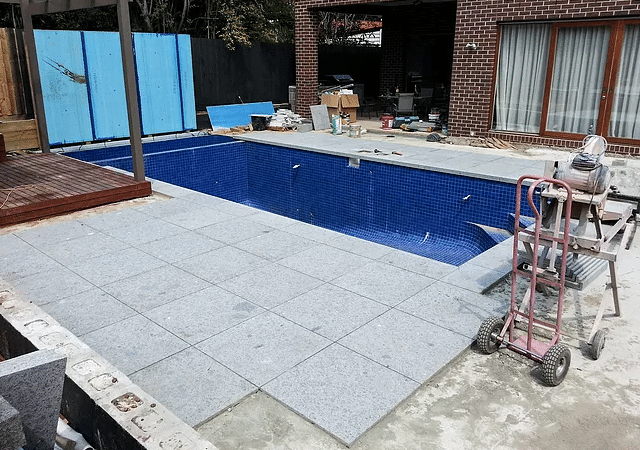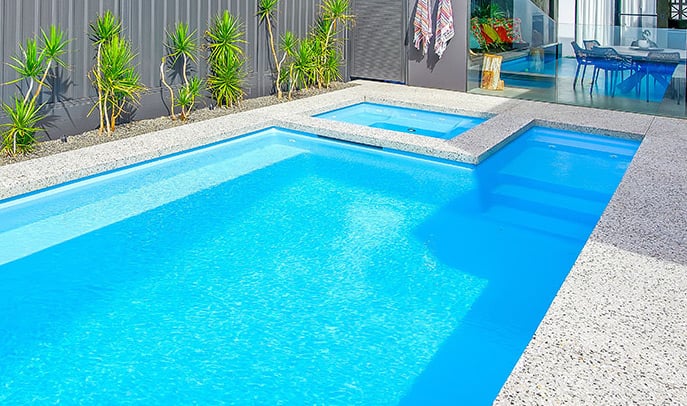
If you've never installed a pool before, there can be a lot of unknowns for someone new to the process. For example do you even know how the size of a swimming pool is measured? Did you realise that fibreglass and concrete pools are measured differently? Do you know what a 'ring beam' is and why is it critical to your fibreglass pool and surrounds? Are all fibreglass pool companies the same and will they all treat you alike? What can go wrong if you put the wrong person in charge of your project?
After designing and constructing hundreds of gardens that feature both fibreglass and concrete pools we've learnt many lessons on how to overcome some of the tricks and traps of installing swimming pools. And how to deal with tricky pool installation companies.
We'd like to share some of our experiences with you in this article. It will give you some practical advice on how to avoid some of these traps with a few real-life examples of what can go wrong so you can avoid this happening to you.
How is a concrete pool measured?
So how do you measure the width and length of a swimming pool?
Measuring a concrete swimming pool is very simple. However you can't measure a concrete pool until it's been poured, because it doesn't exist until then!
(Your designer can tell you what the precise measurement of your concrete pool SHOULD be, but that may vary when it's actually been poured.)
Once the concrete shell has been poured and the pool tiled only then can you actually measure it. Both the length and width are measured from tile to tile across the surface of the water. You could also say the width and length of the pool is the width and length of the water in the pool!
See below for an example of how a concrete pool is measured.
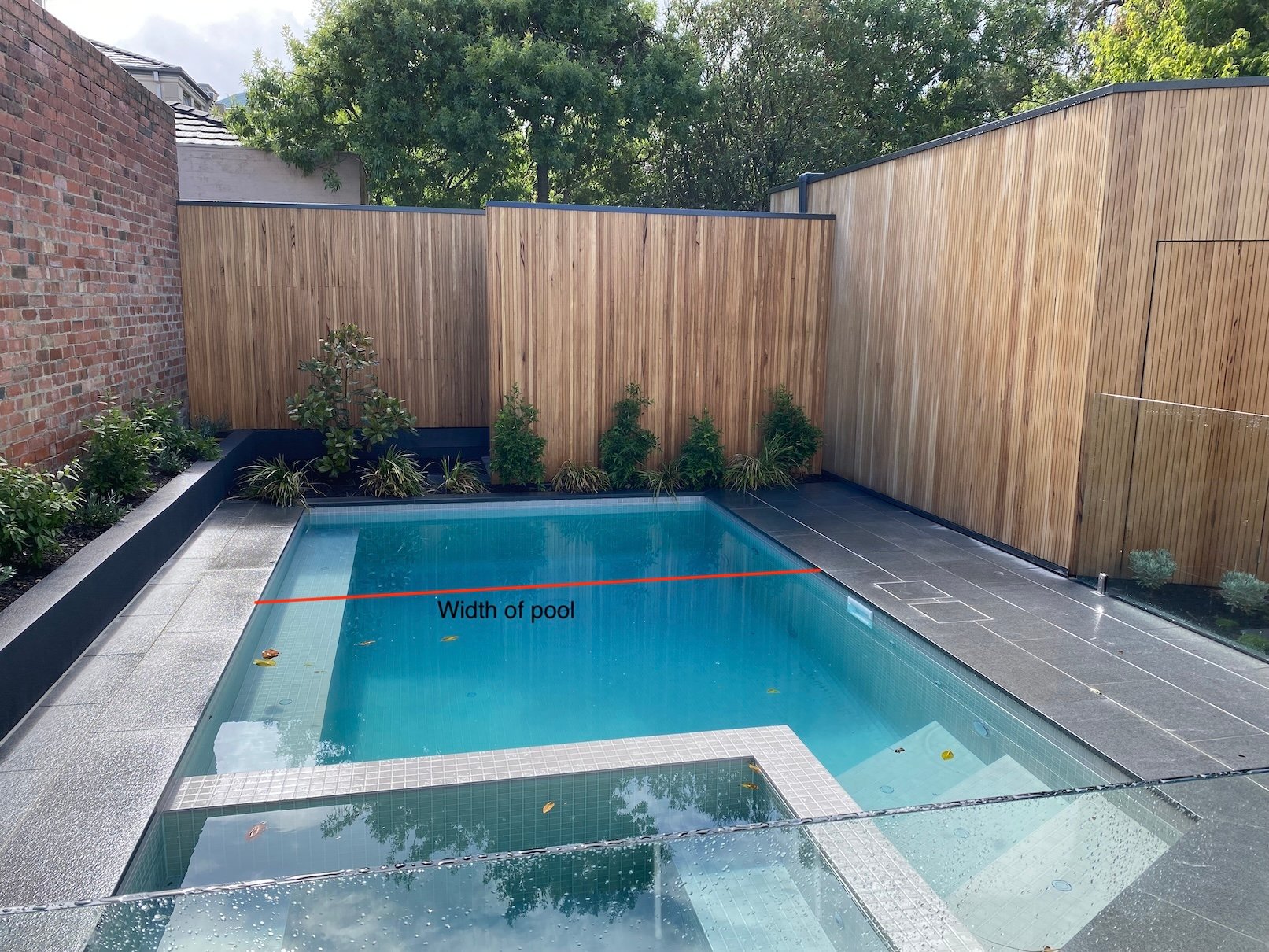
Is a fibreglass pool measured the same way?
Unlike concrete pools which are created on-site, fibreglass pools come pre-manufactured from a factory. (Which also means they are restricted in size, shape and design.)
So when you purchase a fibreglass pool and are told it is 3.5 metres wide, you might think that is the width of the inner part of the pool. But that's not usually how they measure it unless they specify it on their website. Often the length and width of a fibreglass pool is measured from the outer edges of the pool or even to the very edge of the pool lip*.
So a 3.5m wide concrete pool will contain 3.5m 'width' of water. But a 3.5m wide fibreglass pool might only have a 3.2m width of water in it. It might not seem like a lot but it can dramatically reduce the amount of water you will be splashing around in.
Now the trick is if you are weighing up between a 3.5m concrete pool and a 3.5m fibreglass pool you are not comparing the same things. And if you want the maximum amount of swimming area in your pool, this is something to consider along with the cost comparison of the two different types of pool.
If you really want to know what you are getting for your money, ask the sales rep to run a tape measure over your preferred fibreglass pool so you can see what you are getting before you buy it and have them explain exactly where they take their measurements from.
Here is an image of a fibreglass pool and the two most common ways the measurements might be taken. Note: different fibreglass pool companies can also have different-sized lips that run around the outer edge of their pools. If their size is measured to the very outer edge of that lip you need to take this into account when comparing different fibreglass pools from different companies.
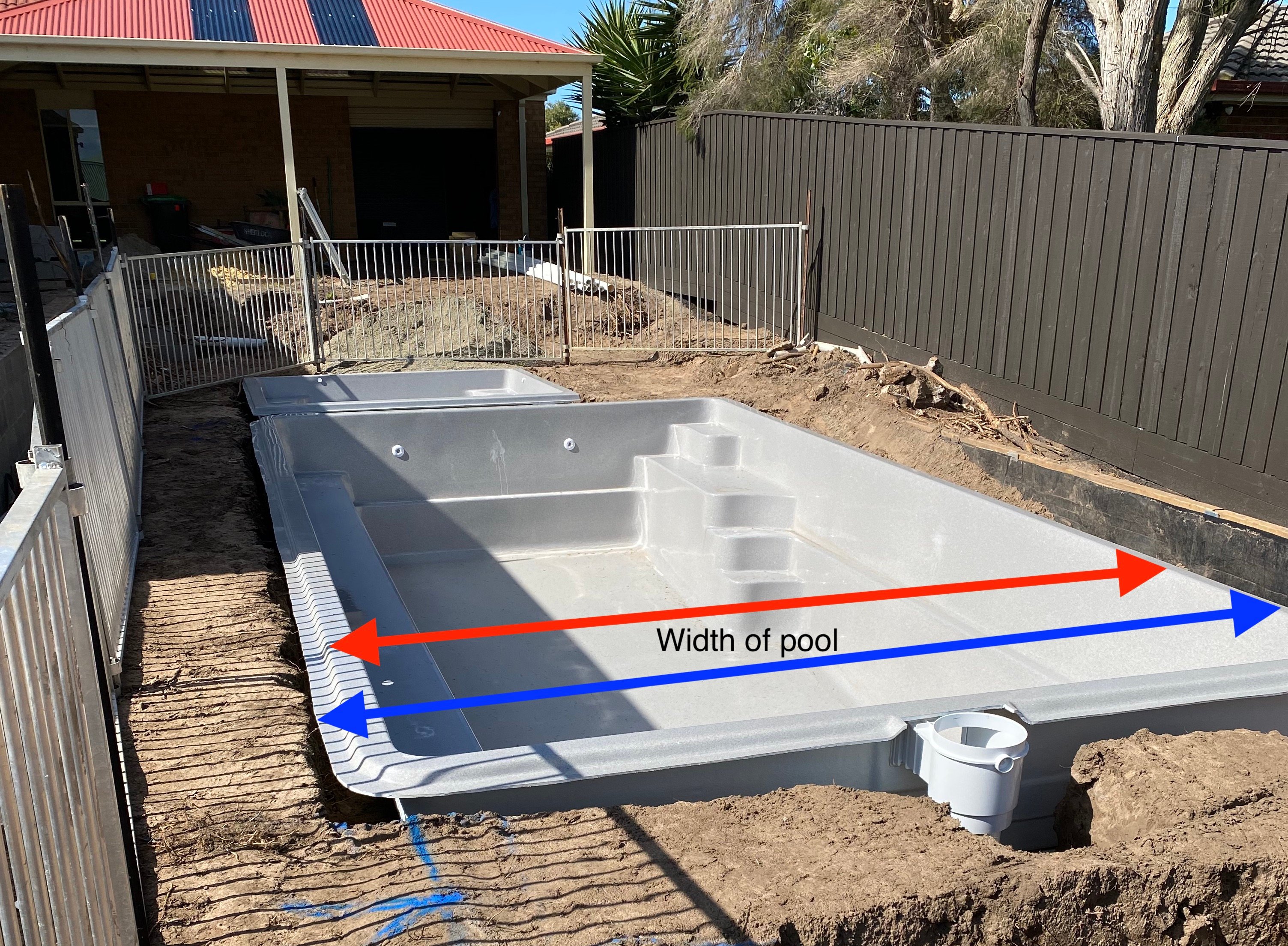 *The reason measuring methods can vary is that all fibreglass swimming pools have to be transported to your site by truck. They are transported vertically with the 'width' of the pool being the 'height' of it on the back of the truck. So they have to specify the total width, including the lip, for road transport rules to ensure it will fit under bridges and overpasses.
*The reason measuring methods can vary is that all fibreglass swimming pools have to be transported to your site by truck. They are transported vertically with the 'width' of the pool being the 'height' of it on the back of the truck. So they have to specify the total width, including the lip, for road transport rules to ensure it will fit under bridges and overpasses.
What is a ring beam and why does it matter?
A concrete swimming pool is very solid and stable. The concrete walls of it make it so.
But a fibreglass pool can flex a bit and be more unstable. To give your fibreglass pool more stability and help hold it in place, a concrete 'ring' is poured around the pool to help stabilise it and hold it in position. This 'ring beam' also enhances the pool's structural integrity reducing the amount it will flex.
Depending on the pool company you choose, the width of the ring beam will vary in size. This doesn't affect the width or amount of water inside the pool but it will affect your pool decking.
Different pool companies can create different-sized ring beams. Most will tend to pour one around 350mm wide because this will allow a typical 400mm coping paver to sit perfectly on top of it.
However, often your pool installer will pour the ring beam to that measurement and then your landscaper comes along and pours additional concrete to extend the paving around around the pool. The problem is you now have a weak point at the joint where the new concrete for the paving area meets the concrete ring beam. As these two pieces of concrete can move slightly independently of each other, it's traditional to caulk behind the coping paver to allow for this movement. (This is better than grout which would crack.)
Below is an image of a typical ring beam by Horizon Pools.
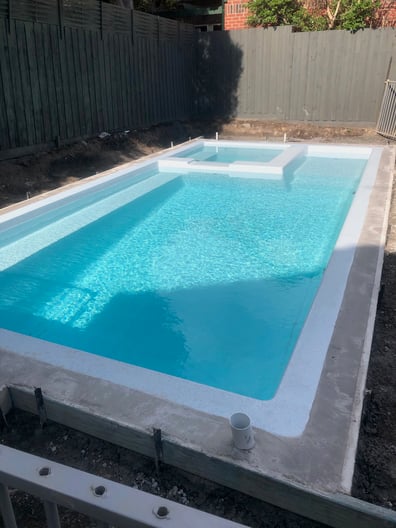
HOT TIP: If the paving area around your pool isn't going to be very wide, you can end up with a small concrete slab under the paving that could move more easily than a bigger one. In this case, ask your pool company if they can pour the ring beam and the paving base together as one slab to eliminate any movement.
In the example below, Leisure Pools kindly poured their ring beam and our concrete base all as one. (Not all companies will do this as some operate under different policies) This was great for our client as it provided a completely stable base for the coping and paving all the way around the pool. Then we could simply pave over it.
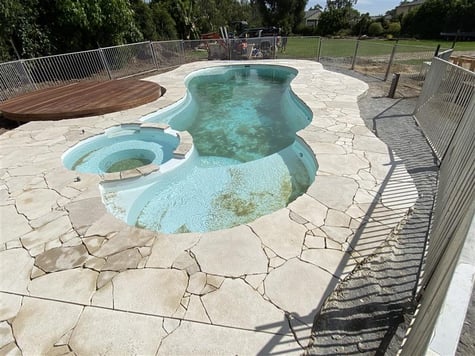
This is a great example of a pool company working very cooperatively with a landscaper to produce the best outcome for a client.
How sloping blocks can affect pool choice
Often the reason people choose a fibreglass pool over a concrete one is the perceived cost of one is often much lower than the other. But this is not always the case.
When you install a fibreglass pool on a sloping block, retaining walls often have to be built to support the pool because it doesn't have the same structural strength as a concrete pool. This can often come at a great additional cost. In some instances, a concrete pool wall can effectively double as a retaining wall by itself, negating the need for this additional cost.
If you have a sloping block, realise you might incur the additional cost of building retaining wall/s if you choose a fibreglass pool.
The image below shows a concrete pool. If a fibreglass pool had been selected for this job, retaining walls on two sides would have been required along with additional pool fencing.
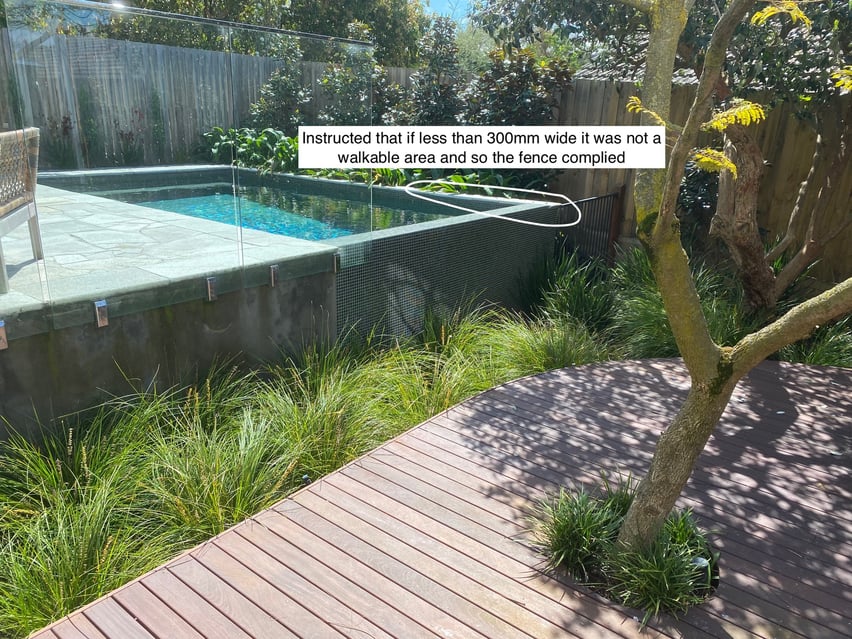
The problem with letting your pool company run the project
In a perfect world, on a landscaping project, everyone gets along and things run smoothly.
But after working in this industry for 30 years, we've certainly come across our fair share of tradespeople or installers who are only interested in their part of the project and don't seem to care how what they do affects others or other parts of the project.
Here is a classic case in point.
We designed a garden for a client that included a swimming pool and, against our advice, they chose their own pool builder and engaged directly with them, keeping us out of the loop. (Even though we were meant to be managing the project).
To make matters worse the pool builder convinced our client to let them "install the pool first as this won't affect the landscapers who can work around us." We tried to point out to our client this was completely untrue and could lead to serious problems, but our message fell on deaf ears.
To further complicate things, before we had even finalised the garden design fully, the client gave the design concept to the pool builder. And the client informed us, "I've told them to come next week and install the pool".
We turned up on site and to our horror we discovered several major issues.
To understand the first issue, below is a screenshot of the garden design showing the pool and a pergola that would sit beside it to provide shade.
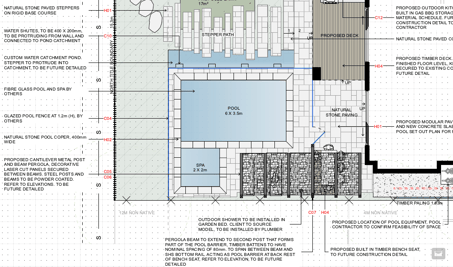
But as this image shows, the pipes leading to and from the pool were in the very place where the posts for the cantilevered pergola were supposed to go. But now we couldn't install them because the pipes were in the way.
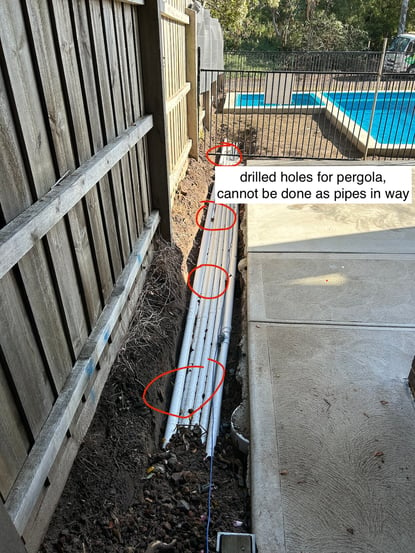
Also the pool itself had been installed by 700mm off the design plan in one direction and 400mm off in the other direction. And a skimmer box had been added to the pool without any communication from the pool installer to us which affected where a pond had been planned to go.
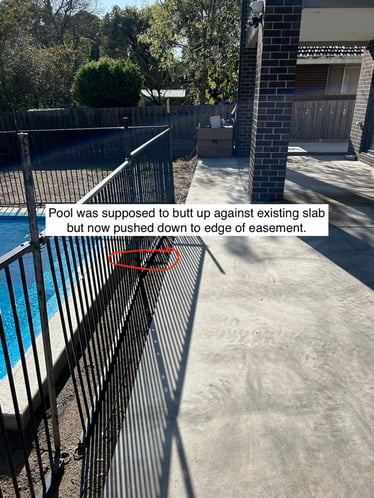
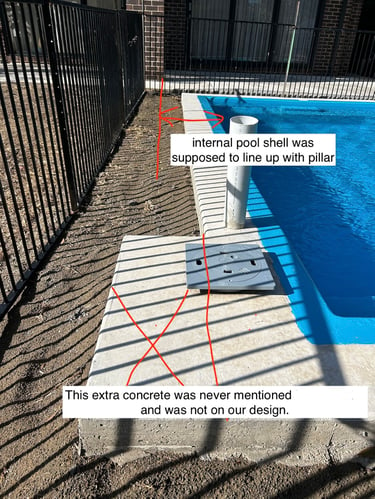
Sadly, this cost the client a lot of money because we had to significantly redesign many aspects of the garden to make all the elements work around a pool that had not been installed in the right place.
Further discussions with the client revealed they had felt pressured into installing the pool by the installer, who had been very complacent in not following our detailed designs.
This is a classic example of what can happen if you allow your pool installer to become the de facto project manager for your site. What should happen is the landscaper manages the site because they understand all aspects of the project and need to control the site.
Usually, as both designers and landscapers of a project, we coordinate all third-party contractors but on this occasion, the client allowed themselves to be bullied by the pool contractor who was only interested in getting the pool installed quickly and getting paid.
(Note: this pool installer is not typical of the industry and not one we would normally work with. Over the years we have established great working relationships with many reputable pool companies who we recommend because they understand how a site should be managed and respect who is managing it.)
Avoiding unexpected costs
On another project, our client had unfortunately engaged a fibreglass pool installer (and signed a contract with them) before we had even designed the space. Sometimes this can work out OK but it carries great risk as it's 'out of sequence'. The smart thing is to engage your landscaper designer and get your garden designed before you even start considering which pool. If you don't, serious unexpected costs can occur.
The problem arose on this project because after designing the garden we got into the engineering stage of the project where things such as what type of soil in on the site can become a major factor.
This project was a new build and the soil was classified as 'P' Class for 'Problematic' soil. This classification meant that to stabilise the fibreglass pool, additional concrete piers had to be installed all the way around the pool at an extra cost of around $15,000. These additional costs would have been avoided if the pool had been concrete, which we would have recommended had we designed the garden from scratch without any pre-signed contract for a fibreglass pool.
Here is an image of the additional piers that had to be installed.
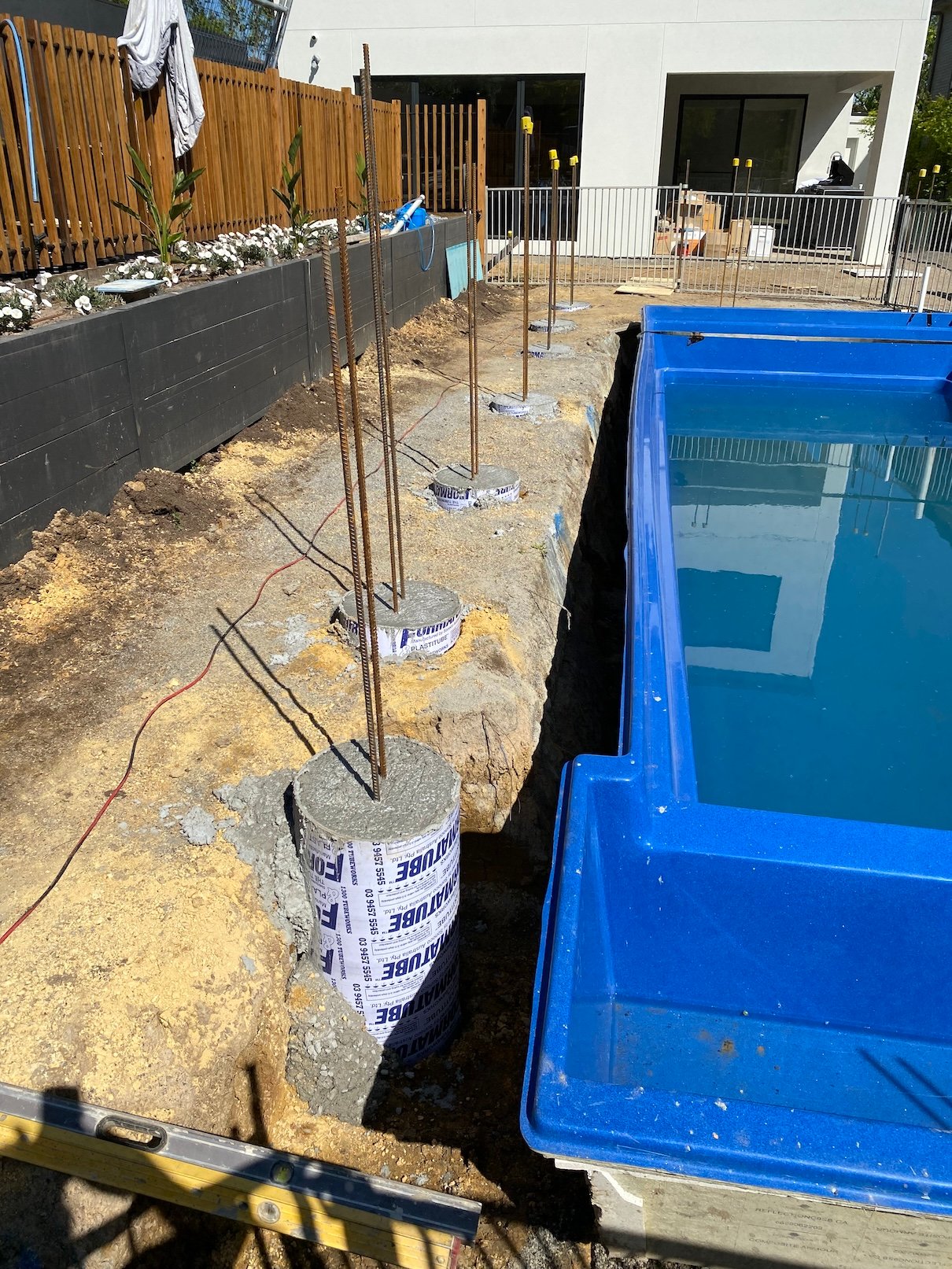
Making installing fibreglass pools simple
We hope you found this article informative. As we hope you now can see there are many tricks to installing a fibreglass pool.
Now you know how to measure their actual size, why they have 'ring beams' around them and some of the pitfalls that can occur when installing them, you will hopefully avoid these problems happening to you.
As you can probably understand now, the secret to avoiding these issues is to get your 'sequence' right. Always follow this simple formula:
1. Appoint a landscape designer or landscape architect first before engaging a pool installer
2. Let them design the garden according to your wishes, which will include a pool
3. Let them guide you on which type of pool to choose using their long professional experience
4. Engage a landscaper whose expertise and experience installing pools will help avoid unexpected problems
5. Let the landscaper 'project manage' the job, including managing the pool installation process to help ensure it all runs smoothly and you don't end up hit with extra costs.
A good landscape designer should create a fully detailed Master Plan to help guide the landscaper in constructing the garden in a properly managed and coordinated way, with all contractors being accountable. (For a little more understanding of what goes into a Master Plan please read this - What's included in a landscape designers' Master Plan?
If you want to avoid any other problems that can occur if the landscape designer and landscaper are not well coordinated, then choose a company that both designs and constructs gardens. At Whyte Gardens we have operated under this model for 30 years because we find it works best and helps to minimise all problems when installing a fibreglass pool.
If you'd like to find out more about how our integrated approach can help you create a beautiful new garden for you, that features a fantastic fibreglass pool, without all the problems, please feel free to download our Free design guide using the link below. It's complimentary and carries no obligation.
If you'd like to read some further articles that could help you with your new pool project, please click one of the links below:
Additional reading on pools, spas & landscaping in Melbourne & Mornington Peninsula...
Which is better for Melbourne - a fibreglass or concrete pool
All you need to know about installing a pool cover roller
What is the right style of pool coping for your pool?
The most common mistakes to avoid when engaging a designer or landscaper
Founder of Whyte Gardens
Topics:

